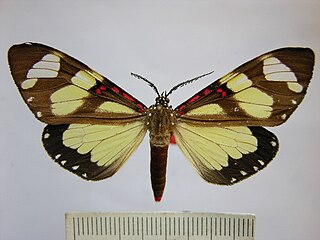
Phaloe is a genus of moths in the subfamily Arctiinae. The genus was erected by Félix Édouard Guérin-Méneville in 1838.
Sermyla is a monotypic moth genus in the subfamily Arctiinae. Its only species, Sermyla transversa, is found in Brazil. Both the genus and species were first described by Francis Walker in 1854.
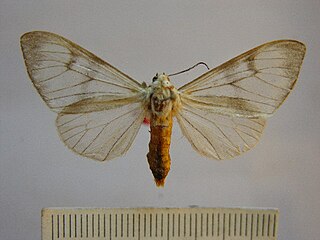
Dysschema amphissum is a moth of the family Erebidae first described by Carl Geyer in 1832. It is found in south-eastern Brazil, ranging from southern Minas Gerais and Rio de Janeiro, south to Rio Grande do Sul.

Dysschema arema is a moth of the family Erebidae first described by Jean Baptiste Boisduval in 1870. It is found in Nicaragua, Venezuela, Peru, Brazil and Ecuador.
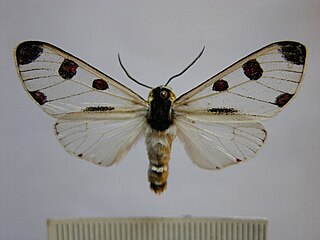
Dysschema boisduvalii is a moth of the family Erebidae first described by Jan van der Hoeven in 1840. It is found in Paraguay, Colombia, Brazil and Argentina.
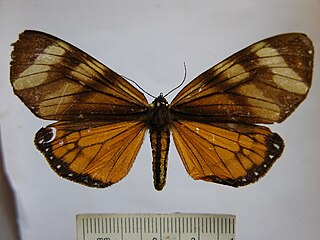
Dysschema eurocilia is a moth of the family Erebidae first described by Pieter Cramer in 1777. It is a common species throughout tropical America, where it has been recorded from the Antilles, Central America and South America.
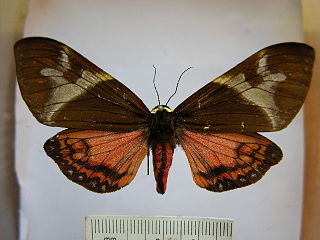
Dysschema lygdamis is a moth of the family Erebidae first described by Herbert Druce in 1884. It seems restricted to the mountains of Costa Rica and Panama.
Dysschema pictum is a moth of the family Erebidae first described by Félix Édouard Guérin-Méneville in 1844. It is found in Brazil.

Dysschema thyridinum is a moth of the family Erebidae first described by Arthur Gardiner Butler in 1871. It is found in Ecuador and Peru.
Dysschema viuda is a moth of the family Erebidae first described by William Schaus in 1910. It is found from Costa Rica to Ecuador.
Dysschema innominatum is a moth of the family Erebidae first described by Vitor Osmar Becker in 2013. It is restricted to southern Brazil, ranging from northern Rio Grande do Sul, to the mountains of Rio de Janeiro.
Dysschema intermedium is a moth of the family Erebidae first described by Vitor Osmar Becker in 2013. It is found in Guatemala.
Dysschema minor is a moth of the family Erebidae first described by Vitor Osmar Becker in 2013. It is found in Mexico.
Chetone zuleika is a moth of the family Erebidae first described by Vitor Osmar Becker and David T. Goodger in 2013. It is found in Panama, Colombia and Brazil.
Josiomorpha triangulifera is a moth of the subfamily Arctiinae first described by Hering in 1925. It is found in Costa Rica and Panama.

Josiomorpha penetrata is a moth of the subfamily Arctiinae first described by Francis Walker in 1865. It is found from southern Mexico to Guatemala.
Josiomorphoides gigantea is a moth of the subfamily Arctiinae first described by Herbert Druce in 1897. It is found in Panama and Colombia.
Josiomorphoides dognini is a moth of the subfamily Arctiinae first described by Hering in 1925. It is found in Colombia.
Pseudophaloe ninonia is a moth of the family Erebidae first described by Herbert Druce in 1884. It is found in Panama and Costa Rica.
Pseudophaloe promiscua is a moth of the family Erebidae first described by Vitor Osmar Becker and Espinosa in 2013. It is found in Costa Rica.







